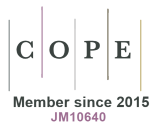The Development of Stem Cell-Derived Exosomes as a Cell-Free Regenerative Medicine
DOI:
https://doi.org/10.33393/jcb.2014.2043Keywords:
Exosomes, Characterization, Isolation, Therapeutic PotentialAbstract
A successful strategy in regenerative medicine over the last decade has been the translation of stem cell therapy to repair diseased or damaged tissue in a wide range of indications, despite limited evidence attributing any therapeutic benefit to cell survival or differentiation. Recent findings, however, have demonstrated that the conditioned media from stem cell cultures can produce similar efficacious effects compared to those observed for cells. This has led to the stem cell paracrine hypothesis, proposing that secreted factors released from the stem cells contribute significantly to their beneficial effects. It has been well documented that stem cells have the ability to release a range of growth factors, cytokines and chemokines relevant to their function; however, these factors are released at levels too low to account for the reported therapeutic effects. Further purification of the conditioned media has since identified that not only are small molecules released by the stem cells, but so too are a large quantity of membrane-bound vesicles, including exosomes, in a functionally relevant manner. In this review, we present our current understanding and explore the evidence supporting the development of stem cell-derived exosomes as a cell-free regenerative medicine.









